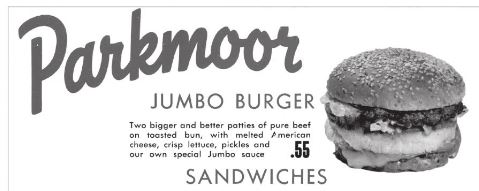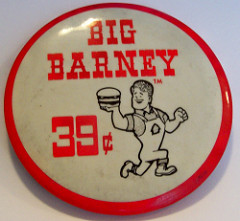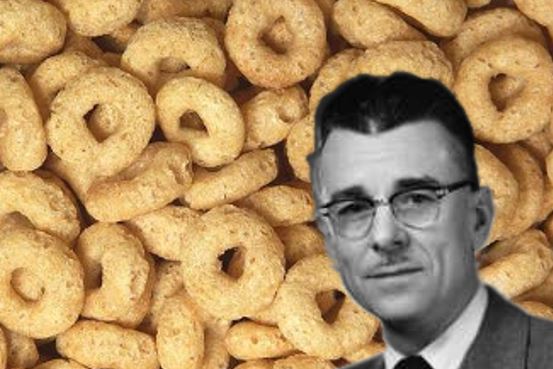
Jaternice, when pan-fried, looks very much like goetta.
We’ve all heard of Tex-Mex Cuisine. But in Texas there’s another brand of cuisine that’s best named Tex-Czech. It’s the foodway of the Germanic and Slavic immigrants from the former Austro-Hungarian province of Moravia in the current Czech Republic, who came to Texas from 1840 to 1870. Mix some of these cuisines with local chili powder and it becomes Czech-Mex.
Last year my summer foodie trip was to Low Country Carolinas. This year I’m planning to take a deep dive into this Czech-Tex culture in the Texas Hill Country. It turns out a branch of my Woellert family immigrated there in the 1860s from their Moravian village to the area of High Hill, 3 miles from Schulenburg.

The Franz Woellert family, like other Austro-Moravians who settled in High Hill, Texas, brought with them their love of goulash, kolaches, and jaternice sausage.
About the only thing left in High Hill now is an old Catholic Church called the Nativity of St. Mary, which is on the Painted Churches of Hill Country Tour. Otherwise, it’s considered a Texas Ghost Town. They have their annual Church festival over Labor Day, where they offer some of this Tex-Czech cuisine. But during it’s heyday, High Hill had a famous Turnverein, a large saloon with a sign saying “Ein Kleinen Wir Nehmen (We Can Have One More)”, and was the capital of the Catholic diocese of Texas. Other little towns in the area still have centuries old dance halls, great meat markets, and remnants of nine-pin German bowling alleys.


St. Mary’s Parishioners making Festival Stew (goulash) left, and serving Czech sausages right.
What I wasn’t expecting to find In researching the trip was a long lost goetta cousin.
Within this Czech-Tex culture are three foods that remain today. The largest sign of this cuisine today is the beloved kolache pastry. The second is their local goulash, sometimes called Festival Stew or named after the individual town where it’s served, like Praha Stew. But embedded in this German-Czech foodway is a third lasting icon, a little known sausage, which just happens to be a very close cousin to our goetta. It’s called jaternice (pronounced yee-ter-neet za)
People who grew up eating jaternice are passionately addicted to it, just like those of us in the Cult of Goetta. They stay hardfast to their recipes – some vehemently leaving out ingredients found in other versions, never going outside their ancestral box.
Jaternice (also called hurka and jiternice) is a sausage made from pork offal (heart, lungs, liver, kidneys) along with rice or barley. Older recipes call for boiling the pigs head. Meat is cooked and ground and it is either linked in a sausage, or poured into pans in porridge form and then pan fried crispy like goetta, served with baked potatotes and beets. Texans like to say ‘fry it like hash’, where in Cincy we know exactly how to pan-fry goetta – thin and crispy – no need to specify.
Jaternice is a slaughter sausage, akin to goetta. It’s the catch-all recipe that ensures every part of the pig is used at slaughter time. The German Czechs of Texas call this celebration at hog slaughter, zabijacka.
Another Czech dialiect calls the sausage jiternice. In Czech the word ‘jitra’ means liver, so its probably a reference to the sausage’s liver content. But, another observation is that the Czech word ‘jatra’ means morning, and typically the sausage is eaten as a breakfast food, so maybe the derivation of the form jaternice or jatranice.
But this slaughter sausage is not just a product of the Texas Czech communities. It’s also to be found in Iowa, Minnesota, and even Wisconsin’s Czech communities. Like the Texas Czech immigrants, many of these immigrants came to the US from the 1840s to the 1870s from the kingdom of Moravia, very near the border of today’s Slovakia, an area known as Wallachia. There’s a town in Texas Hill country by that name. The people are said to be Moravian Vlachs, speaking a distinct Czech dialect with a have Slovak Accent. But also ethnic Germans whose ancestors settled the forested regions of Bohemia, Moravia, and the former Austro Hungarian empire, were part of this emigration too.
Recipes for jaternice from Iowa and the Midwest call for salt, pepper and marjoram, and typically use barley as the grain, rather than rice, commonly used in Texas. Texas recipes call for just salt and pepper and maybe garlic, but usually sauteed onions. The meat is also a coarser grind with more seasoning in texas. Many describe the flavor as tasting overwhelmingly of liver. Some prefer the cartilaginous aspect of the pork head meat. Some, like the Minnesota version, use a high amount of liver, offering a darker looking version.


Texas Jitrnice on the left, and darker Iowa Jaternice on the right.
The Texas Czech Heritage and Cultural Center in La Grange has a large collection of Czech cookbooks with generations old jaternice recipes from the area.
Although it’s getting harder to find, as legacy butchers go out of business, there are still some places it can be found in Texas and the Midwest.
In Shiner, Texas, it can be found at Maeker’s and Patek’s, and also can be washed down with a locally brewed Shiner Bock. Polashek’s Locker Service in Provatin, Iowa, uses barley for theirs and says it contains ears, snouts, cheeks and tongue. Andrew Zimmern made them famous with a recent visit on his show. Nolachecks, in Thorp, Wisconsin also uses barley, snouts, skin and theirs is darker than the Texas and Iowa varieties. New Prague, Minnesota, has a few meat markets carrying it. Perkarna’s Meat Market in Jordan, Minnesota call it jiternice. In Minnesota it’s eaten for breakfast with cottage cheese, hasbrowns, scrambled eggs or kolaches. Many also serve it with toasted houska, the Czech brötchen (braided bread, crusted with poppy, caraway or sea salt).
Whether it’s with rice or barley, or more offal or more liver, jaternice, is another sibling in our Goetta family tree.































